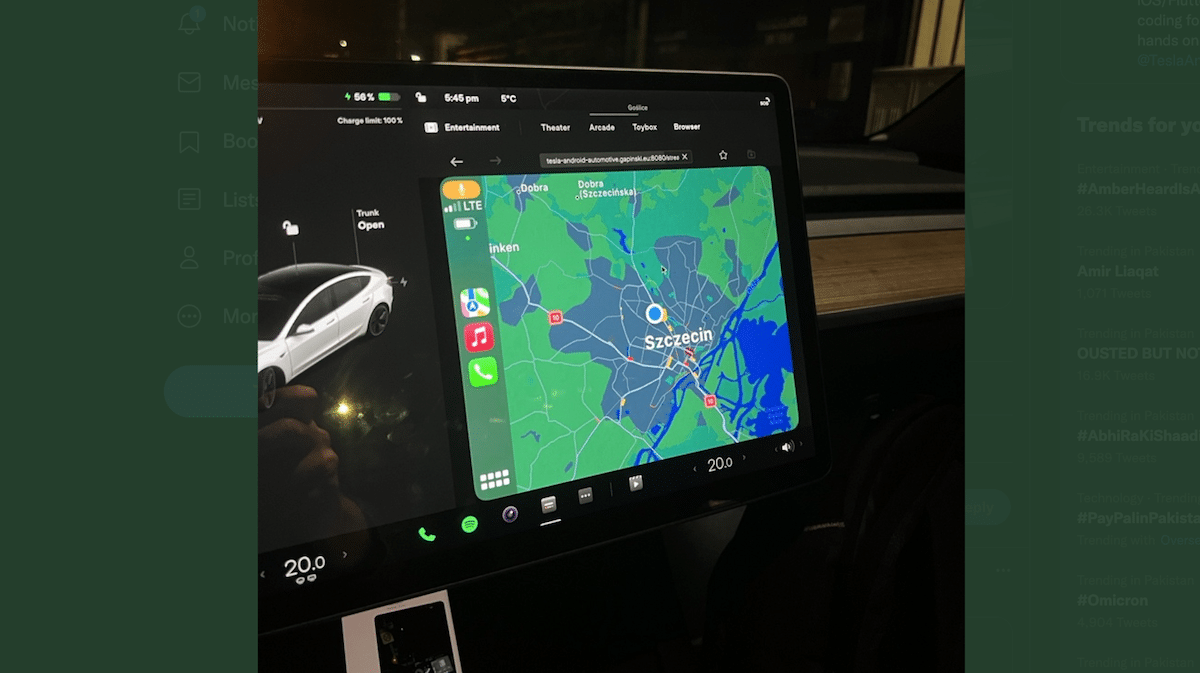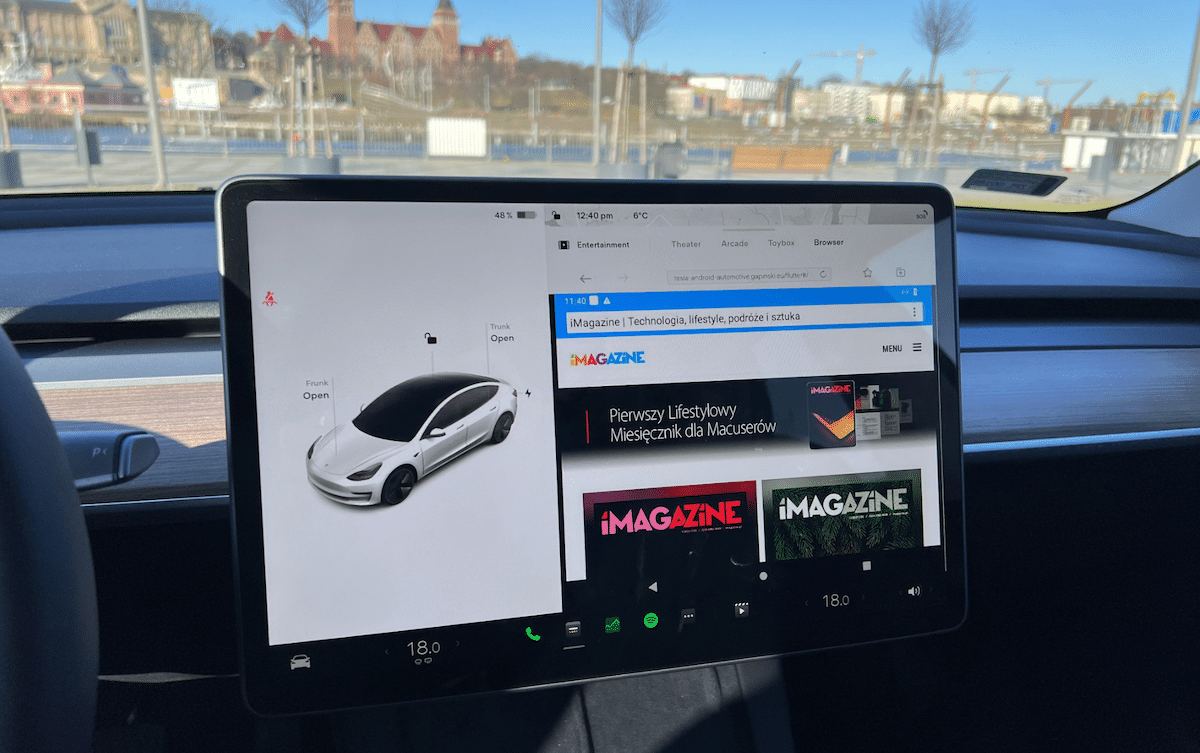Polish developer, Michał Gapiński created a workaround to run Apple CarPlay in his Tesla Model 3 via Raspberry Pi in January 2022. Now, Gapiński has launched the public version of “Tesla Android” on Github for whoever is willing to download and try the workaround in their Tesla vehicles.
[Update, October 5, 2023: Gapiński has improved Tesla Android over the past year and now offers a Compute module 4 Bundle hardware set to use CarPlay without creating a Raspberry Pi rig and performance improvements in the latest Tesla Android firmware update.
- Compute Module 4 Bundle features preassembled accessories so users can simply plug in the hardware and use CarPlay in their Tesla automobiles.
- Tesla Android’s new firmware update boosts performance by lowering CPU usage and bug fixes.
Virtual display module has been updated to take advantage of DMA buffers in the capture pipeline. The new approach lowers the CPU usage by up to 500% and improves performance. Other bugfixes and improvements have been included to enhance stability.
Although Tesla added support for Apple Music in late 2022, the company does not seem inclined to natively support CarPlay in its vehicles anytime soon. Therefore, Tesla owners have to rely on a third-party workaround to use the service.]

CarPlay is an infotainment service by Apple that iPhone users to make or answer calls, send or receive texts, play songs on Apple Music, get directions on Maps, and more on the car’s built-in display, safely while driving. Over 600 vehicles offer support for CarPlay from leading automobile manufacturers including BMW, Audi, Bentley, Cadillac, Genesis, Honda, Ford, and others.
However, Tesla does not support CarPlay and has no plans to offer it in the near in spite of high customer demand. Therefore, in such a situation, Gapiński came to the aid of iOS users with a Tesla.
Download the ‘Tesla Android’ to directly run CarPlay or Android Auto on the Tesla display
The developer has now launched a polished version of his CarPlay workaround on Github, six months after the introduction of its first alpha version. As explained previously, the workaround does not include any hardware changes to the Tesla display, only Raspberry Pi and LTE modem and a Wi-Fi access point.
The system does not require any changes to be made to the hardware of the Tesla, instead, it works by using a Rasberry Pi with an LTE modem and a Wi-Fi access point. The vehicle’s built-in browser is then used to connect to the Rasberry Pi and display the CarPlay interface on the 15-inch center-mounted touch screen. All apps work as expected and can even be controlled using the car’s steering wheel buttons.

On his website “Tesla Android”, Gapiński explained that the concept behind the project is to work on the usability of the workaround so that it becomes popular in the Tesla community. He also added that the primary focus of the project is to offer a simple user interface and improve integration.
We all know that Tesla vehicles are not designed to support Android, CarPlay or Android Auto. This project changes that by turning the browser into an interactive Android tablet that works when the vehicle is being driven.
The main objective for this release has been simple: usability. For the project to scale and become popular in the Tesla community it needs to provide a responsive Android experience. Otherwise, people won’t use it.
Right now the focus is starting to shift towards better integration and simplification. Dropping the two boards requirement will help in reducing both cost and entry barrier by reducing the install guide to something that can be done in a matter of minutes.